Physical Address
304 North Cardinal St.
Dorchester Center, MA 02124
Protrusion of part of the stomach through the diaphragmatic oesophageal opening
Type 1 – sliding hernia (the commonest type): the gastro-oesophageal junction (GOJ) slides proximally through the diaphragmatic hiatus to assume an intrathoracic position ▸ it is accompanied by reflux and oesophagitis
The squamocolumnar junction is seen at ≤38 cm (the normal is 40 cm) from the incisors at endoscopy
Type 2 – rolling hernia: the GOJ is in a normal position below the diaphragm – the proximal stomach (usually the fundus) herniates through the hiatus/focal defect ▸ this is more prone to incarceration and obstruction, and it may undergo torsion, resulting in strangulation, infarction or perforation
The squamocolumnar junction maintains its normal position
Type 3 – combined hernia: features of both are present
Type 4 – intrathoracic stomach (± organoaxial rotation)
Asymptomatic or gastro-oesophageal reflux (± reflux oesophagitis) ▸ symptoms are more commonly seen with a sliding hernia
Sliding hiatus hernia: the Schatski or B ring is demonstrated above (>2 cm) the diaphragmatic hiatus ▸ gastric rugae traversing the diaphragm
Rolling hiatus hernia: a part of the stomach (usually the gastric fundus) is prolapsed into the chest anterior or lateral to the oesophagus
Schatski or B ring: a ring of mucosal tissue at the lower border of the phrenic ampulla marking the junction between the squamous and columnar epithelium (the ‘Z line’)
The ‘A’ ring or inferior oesophageal sphincter: about 2-4 cm proximal to the B ring is a thicker ring produced by active muscular contraction
The Schatski ring is always associated with a small sliding hiatus hernia ▸ it can be congenital or secondary to gastro-oesophageal reflux (with associated inflammation and fibrosis)
The Schatski ring is usually no more than 2–3 mm in thickness ▸ despite being mucosal it can be symptomatic (requiring dilatation)
If the B ring is incomplete, part of it can sometimes be demonstrated as the incisural notch (which is inevitably seen on the greater curve aspect of the stomach)
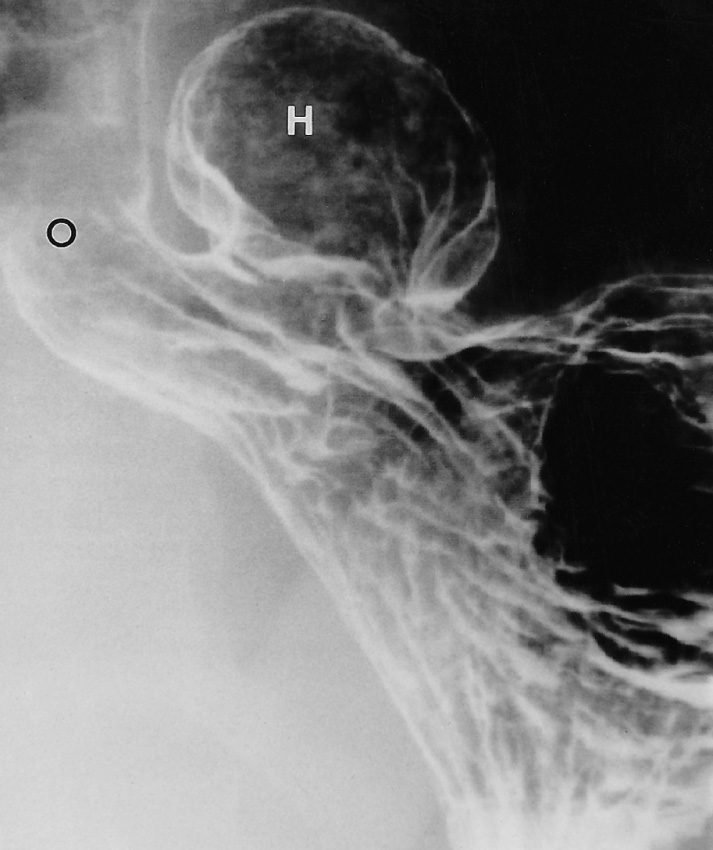
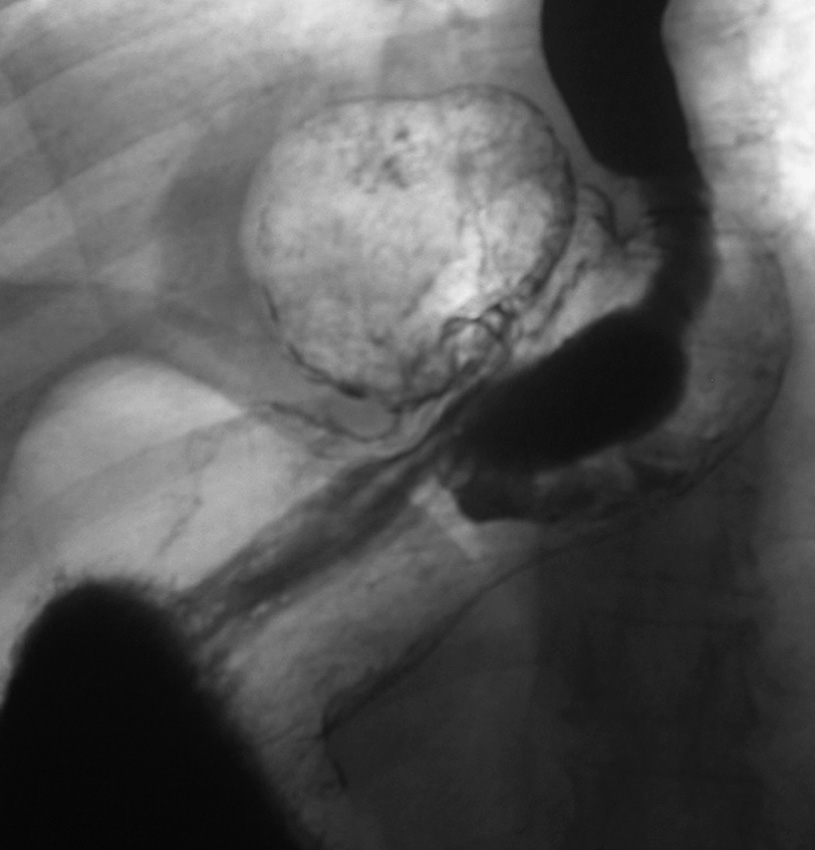
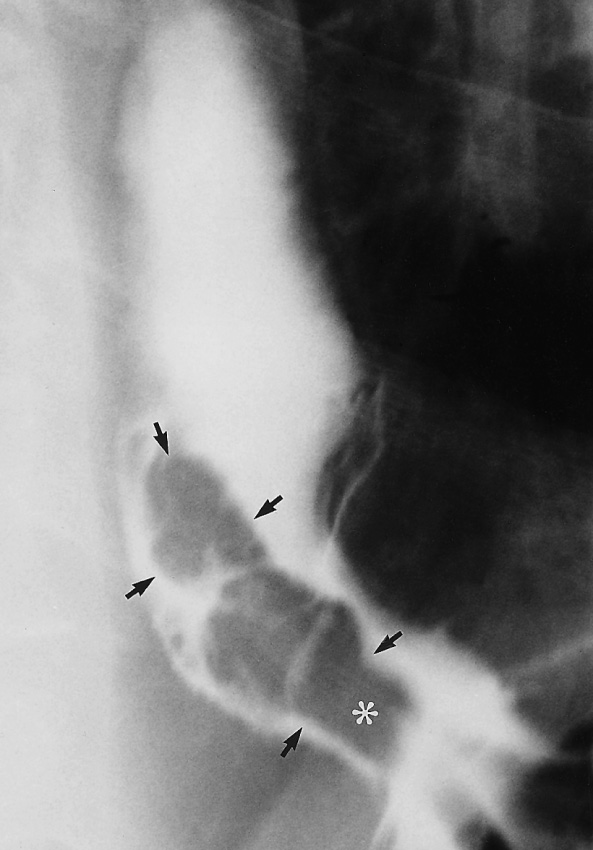
GORD follows lower oesophageal sphincter dysfunction ▸ this initially leads to reflux (with minor irritation and inflammation) but can then proceed to ulceration, fibrosis and stricture formation ▸ it may also be associated with a hiatus hernia
Heartburn or dysphagia ▸ the major long-term complications are peptic oesophagitis (± stricture formation or Barrett's oesophagus)
Reflux: this may be demonstrated but alone is of questionable significance – minor amounts can occur in the normal population ▸ gross reflux (up to the level of the aortic knuckle or above and not cleared by a stripping wave passing down the oesophagus) is likely to be symptomatic
Associated features: a wide gastro-oesophageal junction (> ⅔ of the maximally distended thoracic oesophagus) ▸ an inflammatory gastro-oesophageal polyp (seen as a single linear polyp straddling the GOJ)
Reflux oesophagitis: this can demonstrate mucosal oedema, erosive disease or frank ulceration ▸ initially the collapsed oesophagus shows thickened longitudinal folds (>3 mm) ▸ multiple fine ulcers give the mucosa a punctate or granular appearance ▸ larger discrete punched-out ulcers can develop ▸ ulceration is most pronounced immediately above the GOJ and local circular muscle spasm may produce transverse folds ▸ scarring produces permanent folds that radiate from the ulcer margins
Long-term sequelae: stricture formation (typically a short stricture above a hiatus hernia with smooth tapered margins) ▸ the development of Barrett's oesophagus (in 10% of cases)
Reflux of 99m Tc-sulphur colloid labelled scrambled egg can demonstrate gastro-oesophageal reflux
24-hour pH measurement is the ‘gold standard’ in the assessment of reflux
There is no direct relationship between a hiatus hernia and GORD: many patients have a hiatus hernia but no GORD (but most patients with GORD will have a hiatus hernia)
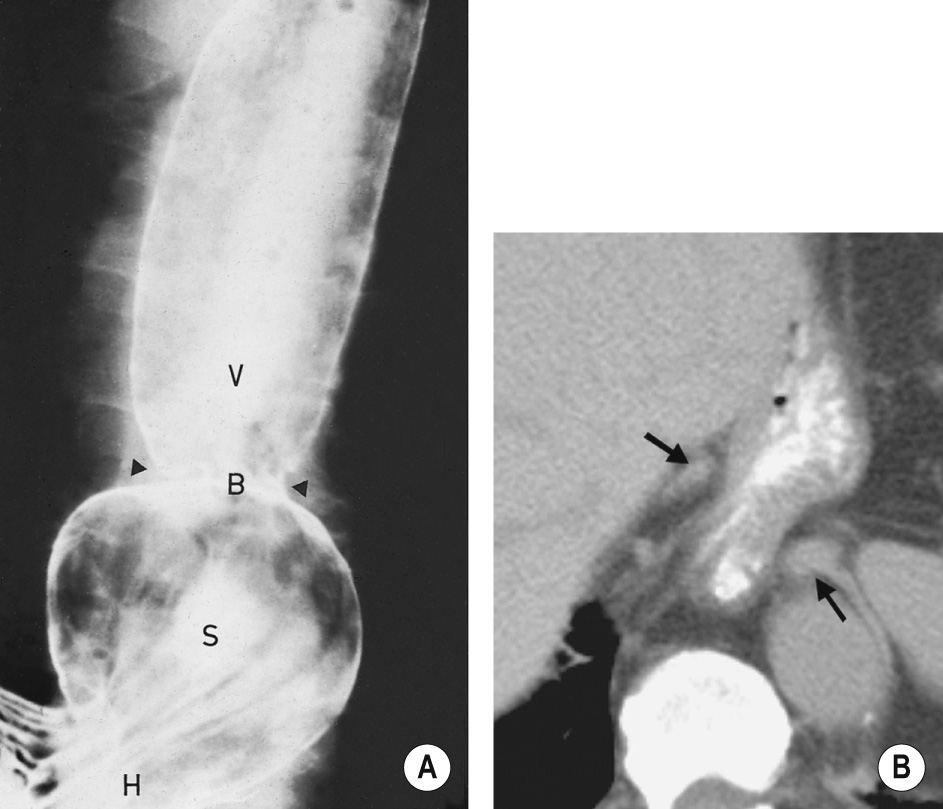
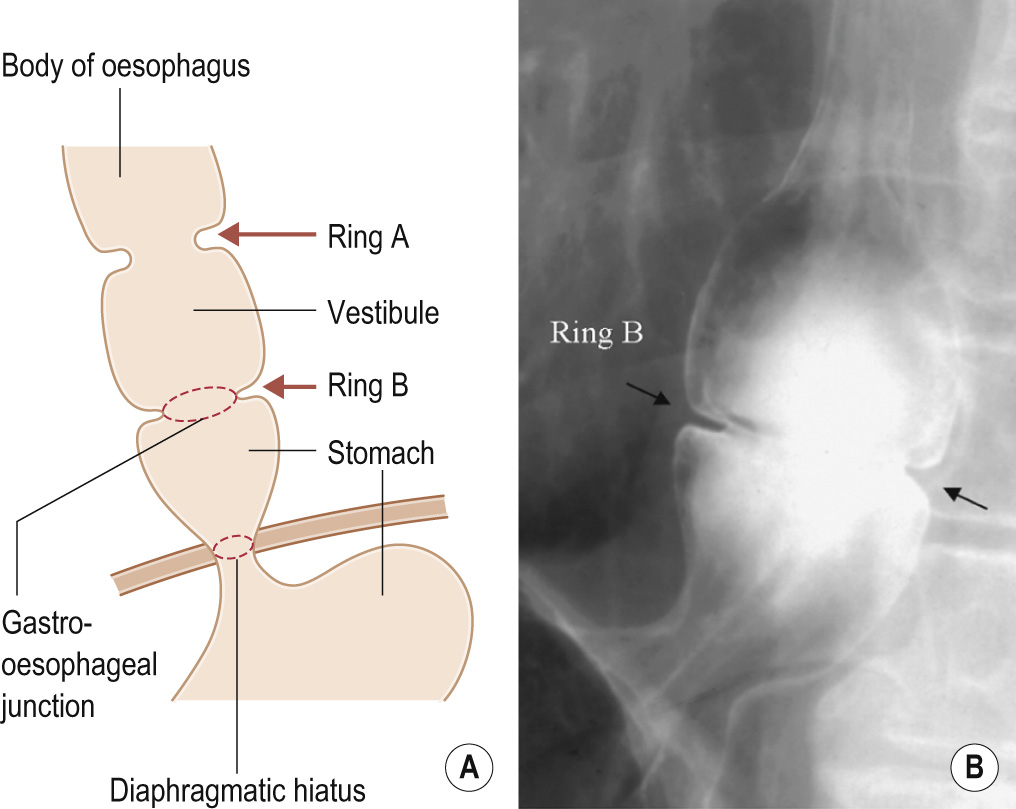
Oesophageal inflammation (± subsequent smooth benign stricture formation) can be caused by the following:
GORD (see separate section)
Infection: especially in the immunocompromised patient Candida albicans ▸ herpes simplex virus (HSV) ▸ cytomegalovirus (CMV) ▸ human immunodeficiency virus (HIV) ▸ tuberculosis
Drugs: potassium chloride tablets ▸ tetracycline ▸ clindamycin ▸ doxycycline ▸ NSAIDs
Radiation: this is often self-limiting
Crohn's disease: this is very rare and usually accompanied by extensive GI disease elsewhere
Iatrogenic: following prolonged placement of a nasogastric tube (NGT)
Caustic ingestion of strong acids or alkalis
Odynophagia ▸ dysphagia ▸ haematemesis
Candidiasis: initially there is dysmotility and atony of the oesophagus ▸ eventually classic plaque-like filling defects with ulceration and pseudomembrane formation are seen (there are also irregular and thickened mucosal folds) ▸ occasionally pseudo-ulcerations may appear as aphthous ulcers
HSV: vesicles in the upper and mid-oesophagus appear as sessile filling defects ▸ when they burst they leave punched-out superficial ulcers on a background of normal mucosa ▸ in advanced disease there can be diffuse ulceration
CMV/HIV: presents with giant oesophageal ulcers
Drugs: potassium chloride causes deep ulceration leading to stricture formation ▸ NSAIDs can cause contact oesophagitis
Radiation: >20 Gy results in a transient oesophagitis with aperistalsis or tertiary contractions ▸ >45 Gy results in obliterative endarteritis after 6 months with severe oesophagitis and smooth strictures – deep ulcers can also form (which may fistulate to the trachea)
Crohn's disease: this can present with aphthoid ulcers or frank ulceration
Nasogastric tube: this renders the lower oesophageal sphincter incompetent, resulting in a reflux oesophagitis and a long tapered stricture within the lower oesophagus ▸ this may occur only 48 h post placement ▸ the strictures are often long and extensive
Caustic ingestion: this can lead to mucosal necrosis with ulceration and mucosal sloughing ▸ the oesophagus may perforate within the 1 st 2 weeks or result in fistulation to the pleural cavity or pericaridium ▸ it heals with fibrosis and stricture formation ▸ strictures occur at the normal sites of oesophageal compression (e.g. at the level of the aorta, left main bronchus or diaphragmatic hiatus)
A hereditary skin disease affecting children where minor trauma produces bullae formation ▸ the oesophagus may be involved (leading to stricture formation)
A benign mucous membrane disease of middle age, involving the conjunctiva and mucosa of the oral cavity and skin ▸ the upper oesophageal mucosa may be involved with ulcers, webs and stricture formation
The excretory ducts of the oesophageal deep mucous glands dilate and fill with barium ▸ they are seen on barium studies as multiple, flask-shaped mucosal outpouchings ▸ this disease is usually diffuse, but may be localized if it is associated with peptic stricture formation or an oesophageal carcinoma
Fistulation may occur between these pseudodiverticula ▸ intramural abscesses may develop which can rarely perforate through the oesophageal wall ▸ long tapered strictures may arise
It is associated with oesophagitis (usually due to reflux) ▸ other underlying disorders include diabetes, candidiasis and alcoholism
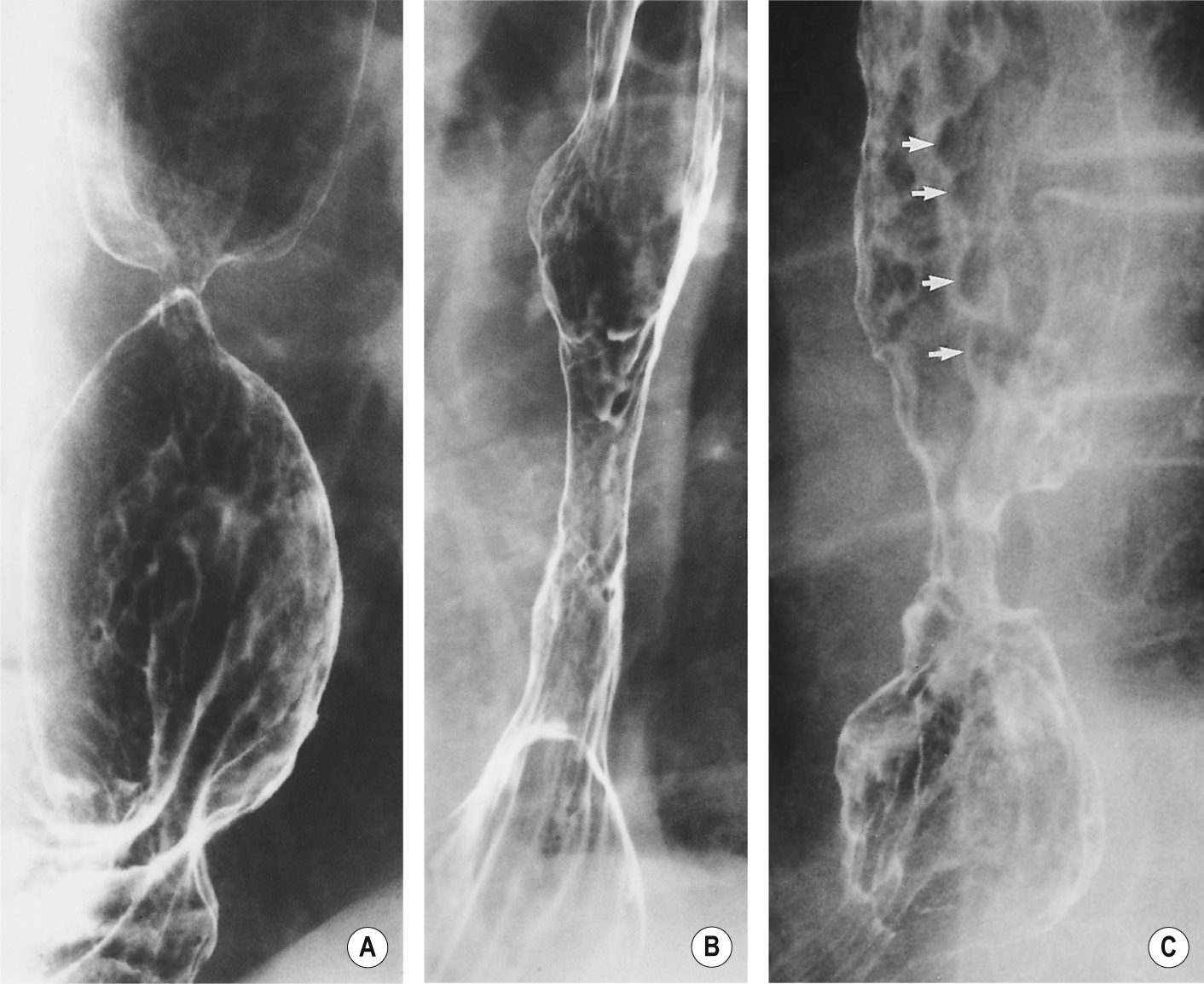

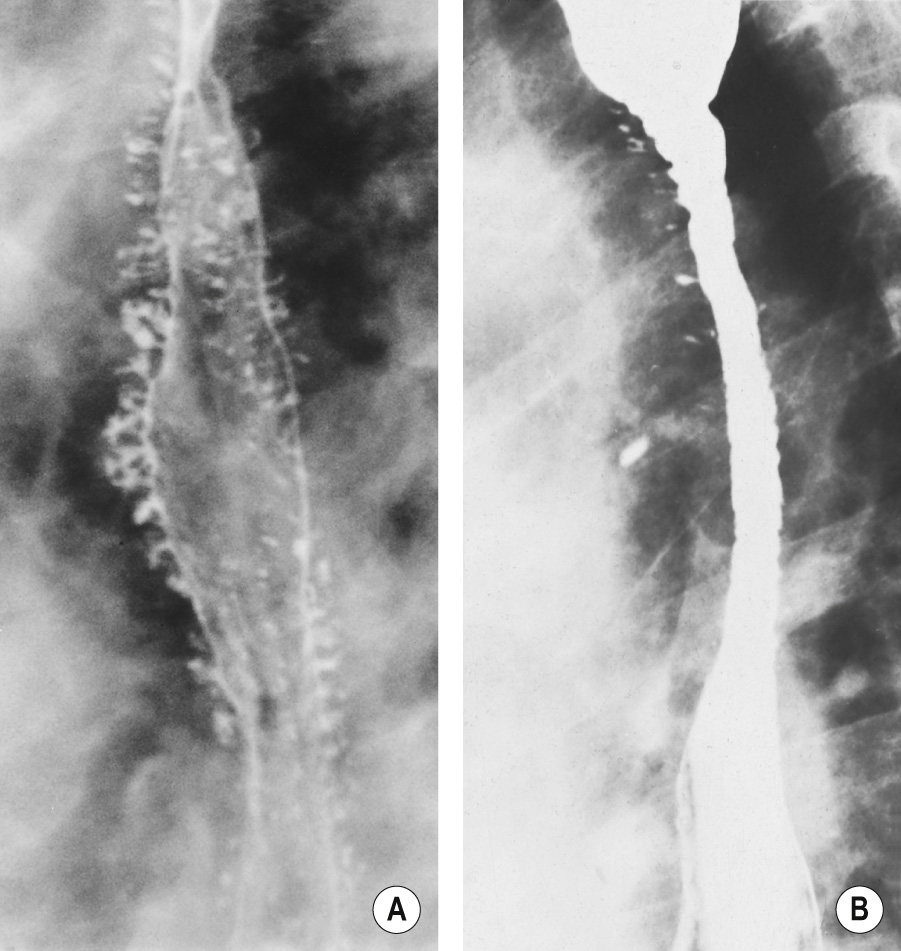
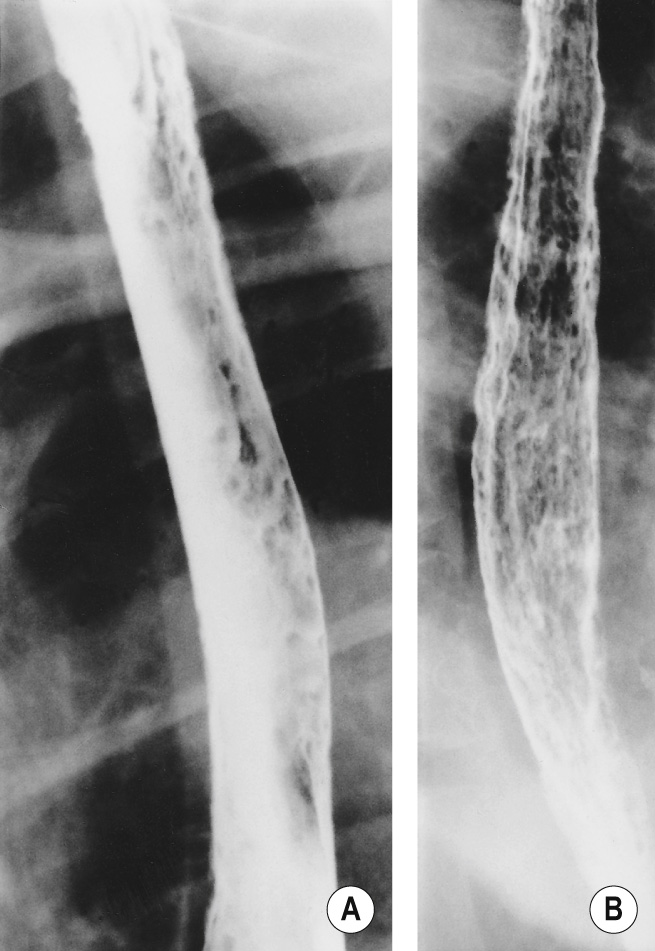
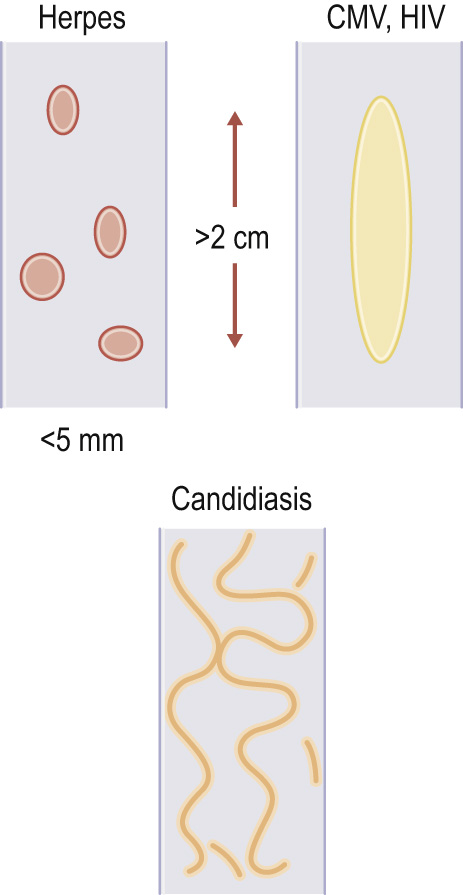
Benign tumours arising from the oesophageal mucosa or submucosa:
Mucosal origin: papilloma
Submucosal origin: leiomyoma (the commonest type) ▸ neurofibroma ▸ lipoma ▸ fibrovascular polyp
These can be asymptomatic or present with dysphagia
Fibrovascular polyp: this may be regurgitated into the mouth and even, on occasion, aspirated (resulting in asphyxia)
Papilloma: these are usually small (2–5 mm) ▸ larger papillomas may trap barium within the interlacing fronds that cover their surface
Leiomyoma: these are usually found within the lower ⅓ of the oesophagus ▸ they appear as a smooth submucosal wide-based filling defect covered by an intact mucosa ▸ they may calcify and can be multiple
Neurofibroma/lipoma: these may be difficult to distinguish from a leiomyoma and are extremely rare
Fibrovascular polyp: these are usually found within the proximal oesophagus ▸ they are pedunculated (the stalk forms due to repeated passage of food with peristalsis) ▸ they may expand the oesophageal lumen but rarely cause significant barium hold-up (due to their very pliable nature)
Become a Clinical Tree membership for Full access and enjoy Unlimited articles
If you are a member. Log in here